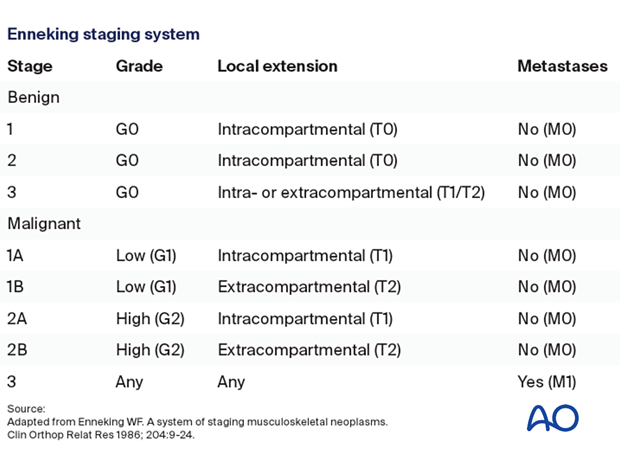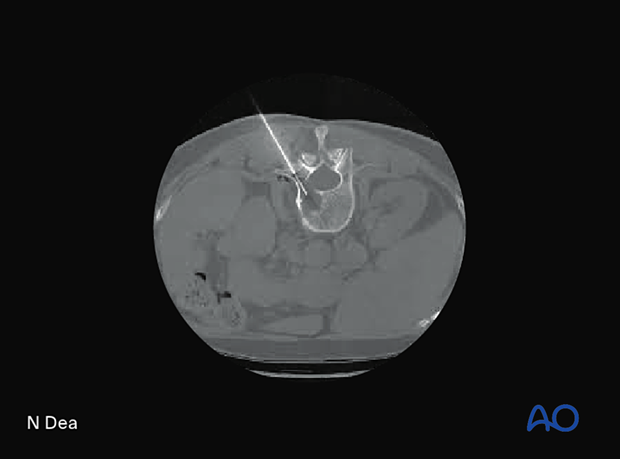Suspected primary spine tumors: essential initial assessment
Primary tumors of the spine are rare entities. A high degree of suspicion of a primary tumor is warranted, as a potentially curable tumor can be rendered incurable by performing an Enneking-inappropriate surgery.
The preoperative neurological assessment must be carried out as described in the Neurological evaluation.
Then, every patient with a tumor of the spine should undergo local and systemic staging, culminating with a well-planned biopsy.
Local staging includes a CT scan and MRI of the whole spine.
Vascular studies may also be indicated based on the localization of the tumor.
Systemic staging includes a CT scan of the chest, abdomen, and pelvis. A PET scan can also be performed.

When the systemic staging is negative, the tumor must be considered a primary bone tumor until proven otherwise. These should be referred to a specialized center to obtain a histological diagnosis.
The surgeon should be an integral part of the planning of the biopsy to ensure that it is taken at the planned surgical site, and that the biopsy tract can be resected as part of the definitive surgery.
The biopsy should be performed with a CT-guided trajectory in radiology using a trocar. An open biopsy should be avoided as these are associated with a higher rate of local occurrence and tumor spillage. Based on the histological diagnosis, as well as local and systemic staging, the definitive diagnosis of a primary tumor can be made, and the tumor can be classified according to the Enneking classification. The Enneking stage will inform about the best surgical resection.
Alternatively, the WBB classification can be used to help with assessing surgical feasibility and for planning.














